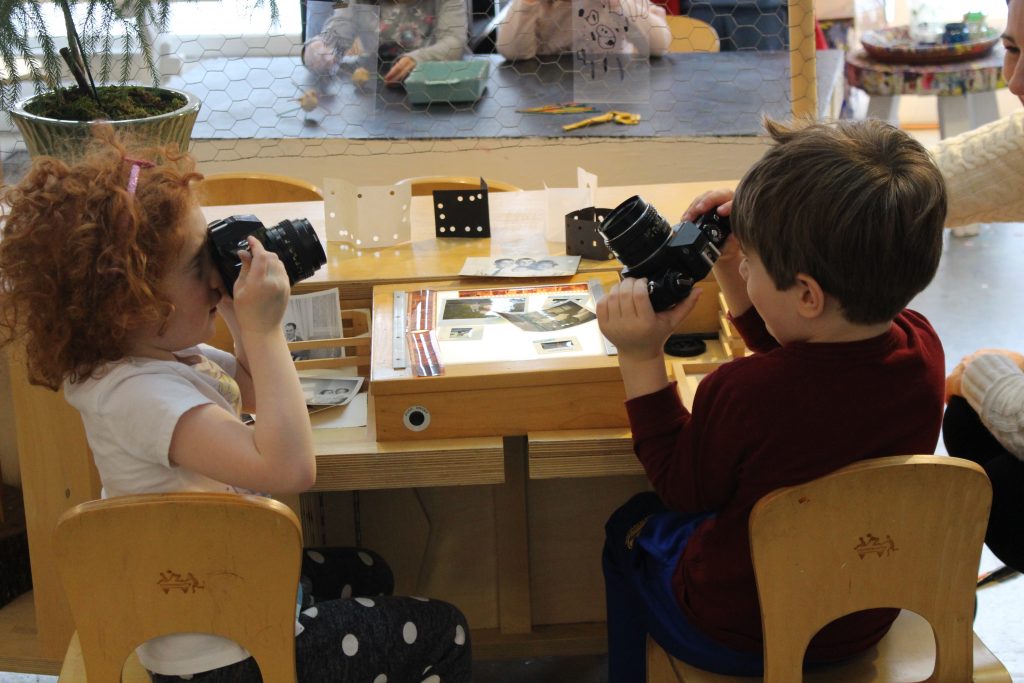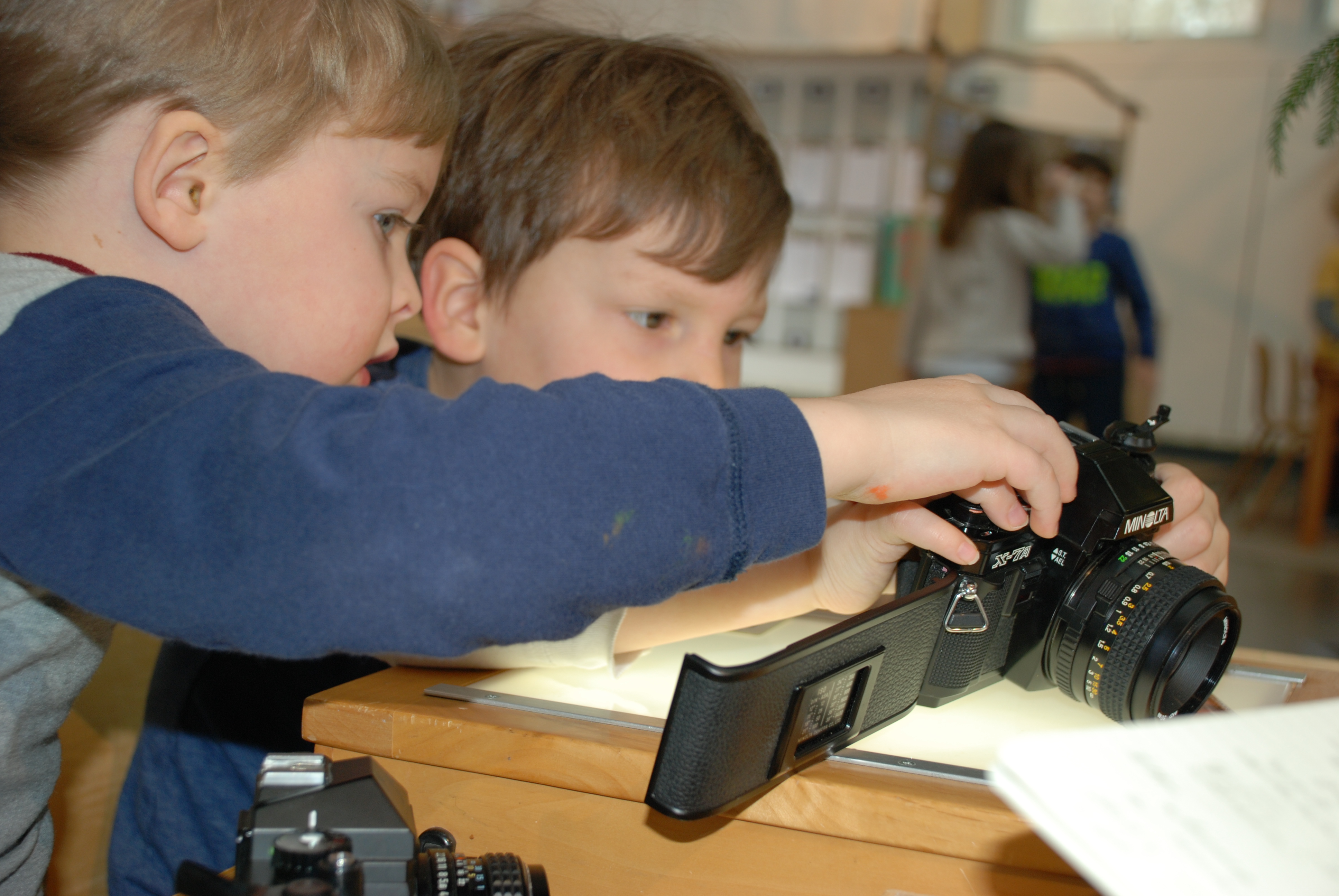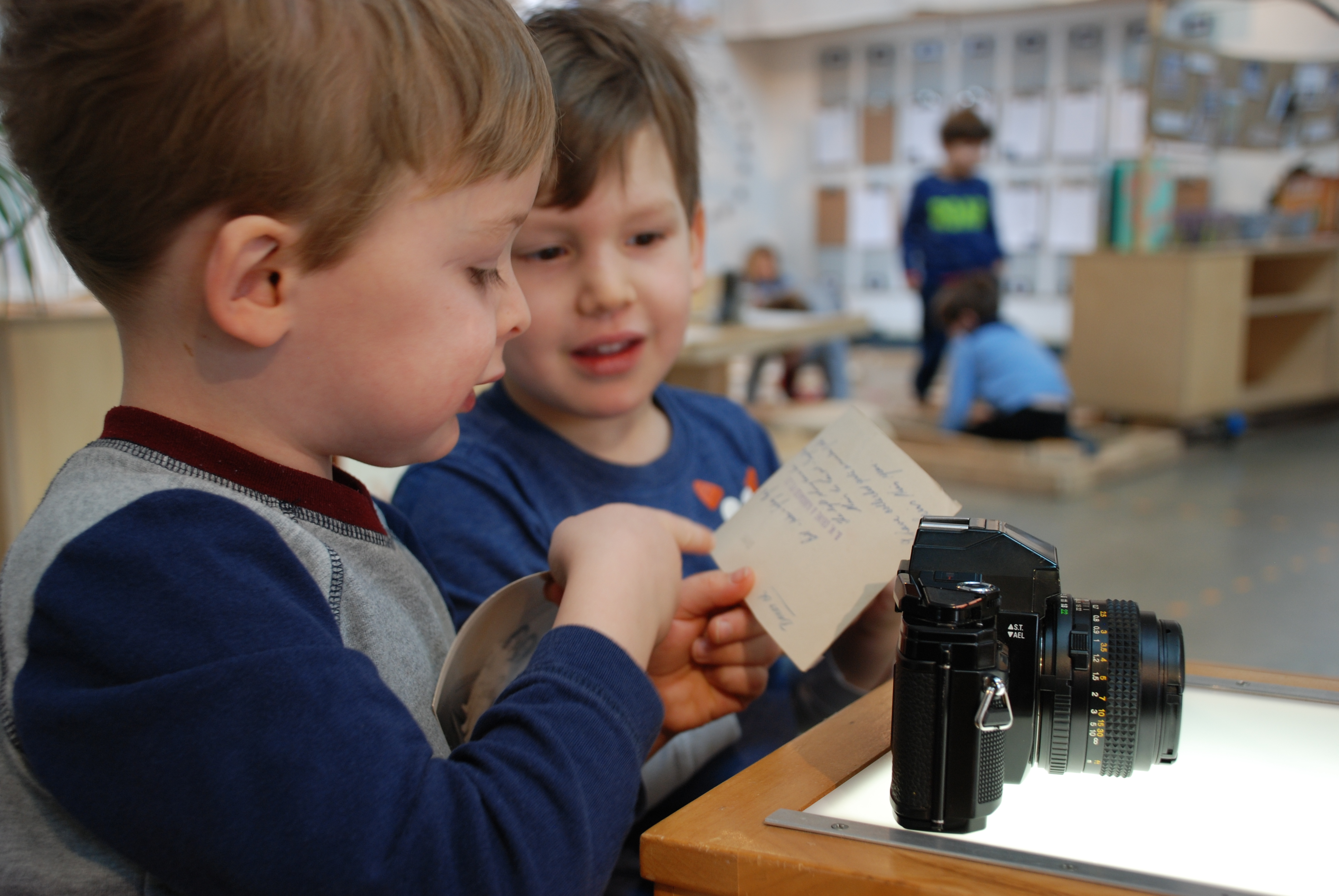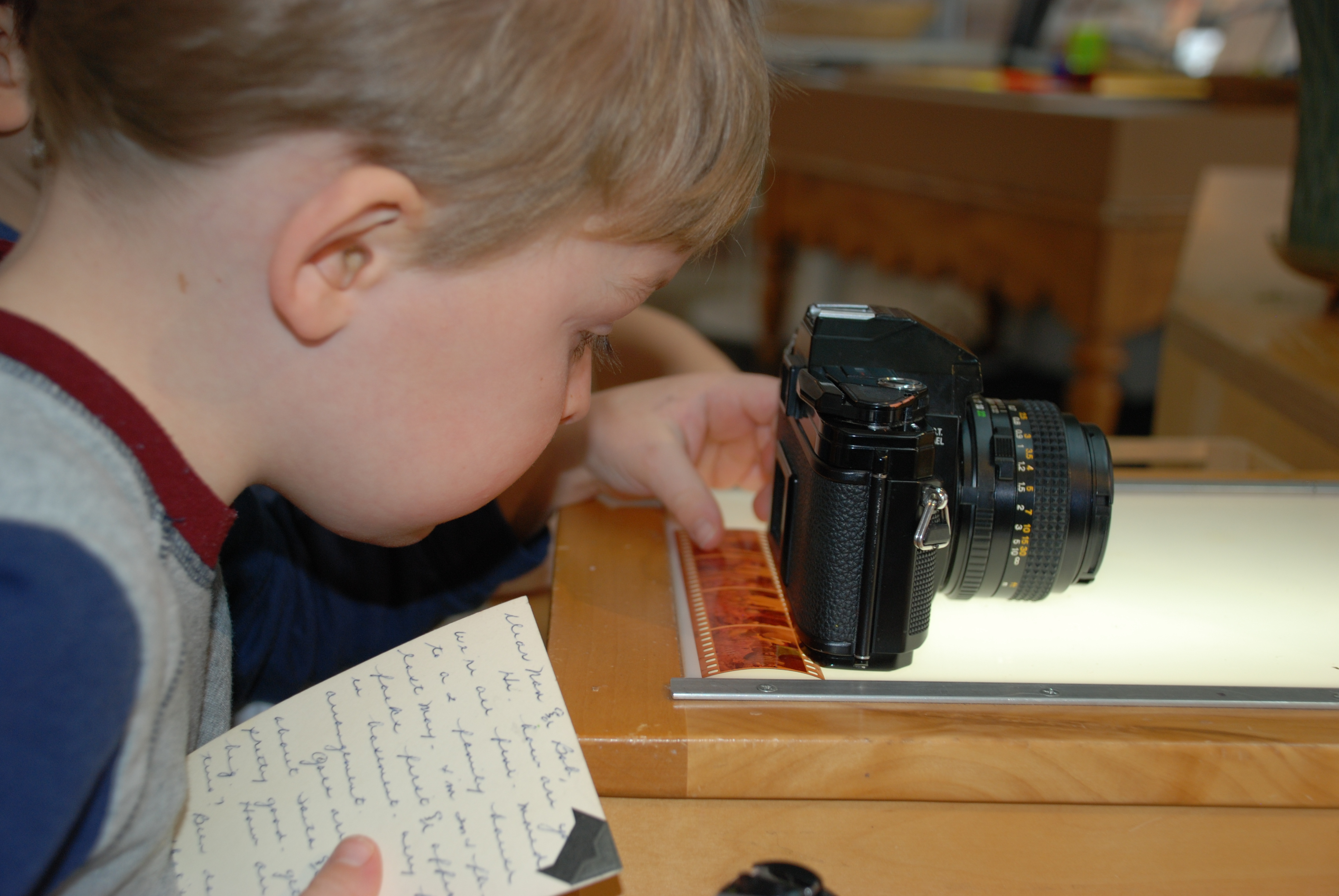As a teaching team in our thinking around empathy, we continue to turn the children’s attention towards the other. We decided to use a tool we find invaluable in capturing seeing more deeply.
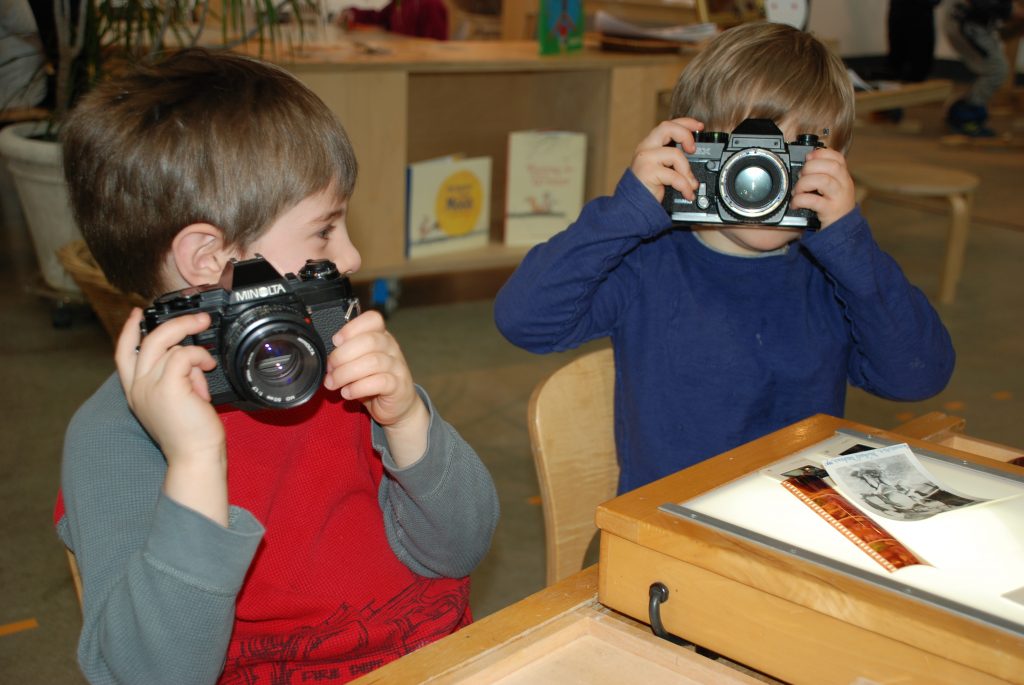
Using photography is a excellent creative outlet for children. However, it is important to allow children to advance at their own pace and to have time to mess about using any new tool. We began by introducing the children to a set of mechanical cameras that do not work. Nonetheless, they provided an opportunity to be curious and explore.
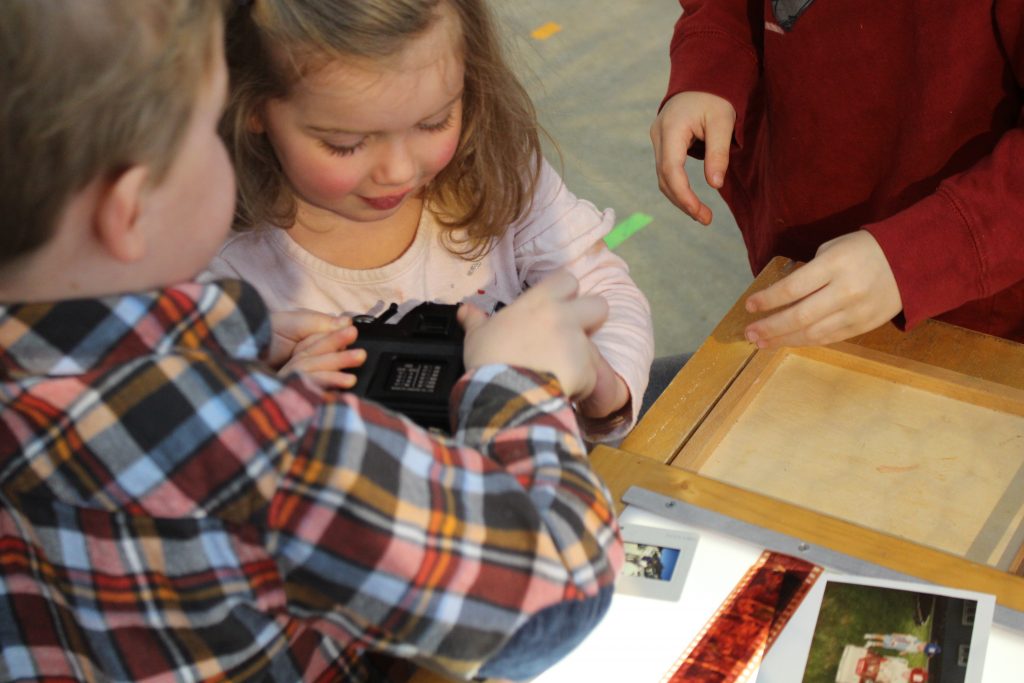
Our eventual intention will be to introduce using working digital cameras with the children. While we know children today are far more tech-savvy than before, there is delight for us in re-visiting what were the familiar ways of knowing photography in the not so distant past through exploring with these mechanical cameras.
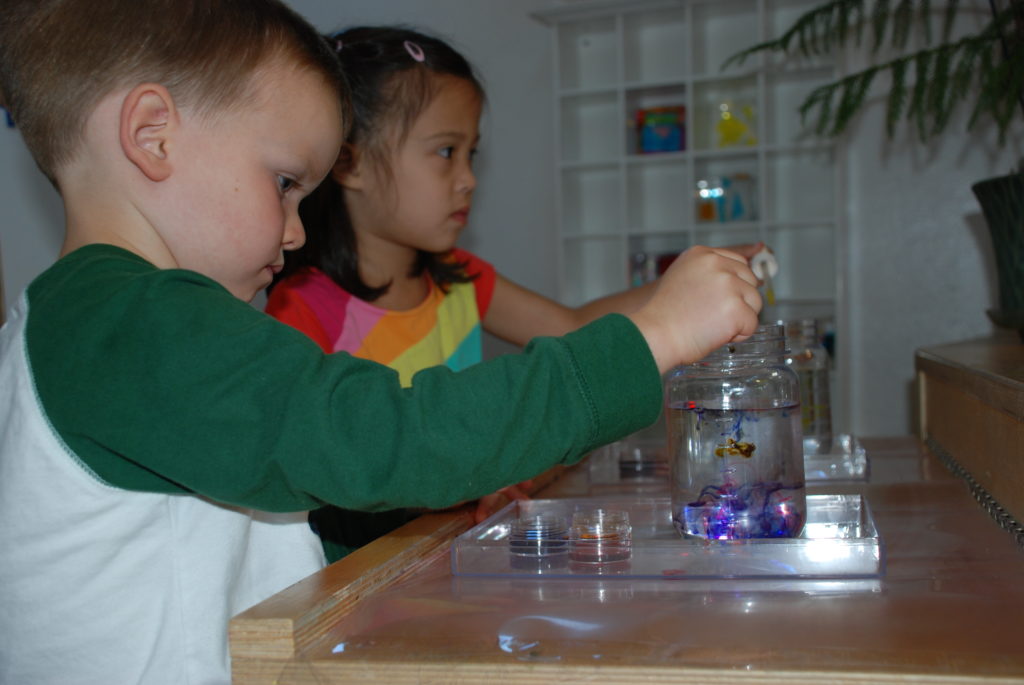
The joy in discovering the importance of hearing the mechanical slap of the shutter to verify that you captured the specific moment. Or the anticipation of waiting for the images to be developed into hands-on paper and negatives. This process that’s now obsolete in many ways in their world.
“I want to take a picture!…How do you take a picture?…Where is it? -Louis
“How do you work this thing?!” -Ian
“Where does the picture come out?” -Wes
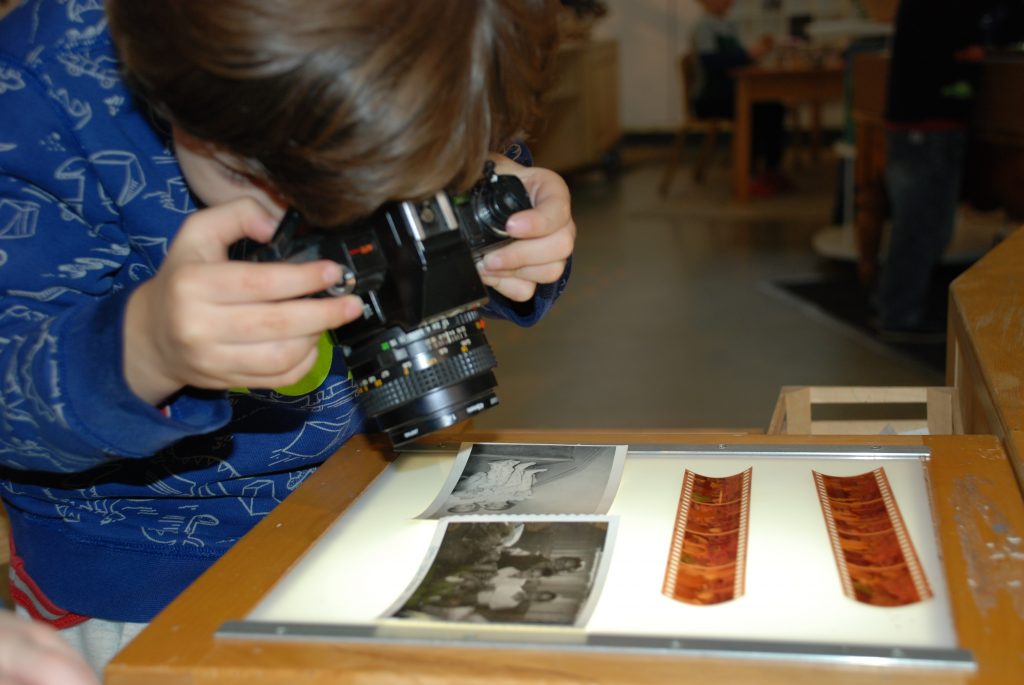
“You pull this back (the lever), you press down and then you take a picture.” -Case
“It just didn’t press it enough.” -Charlie N.

“That’s not a button, right?” -Travers
“No, it’s a switch.” -Wes
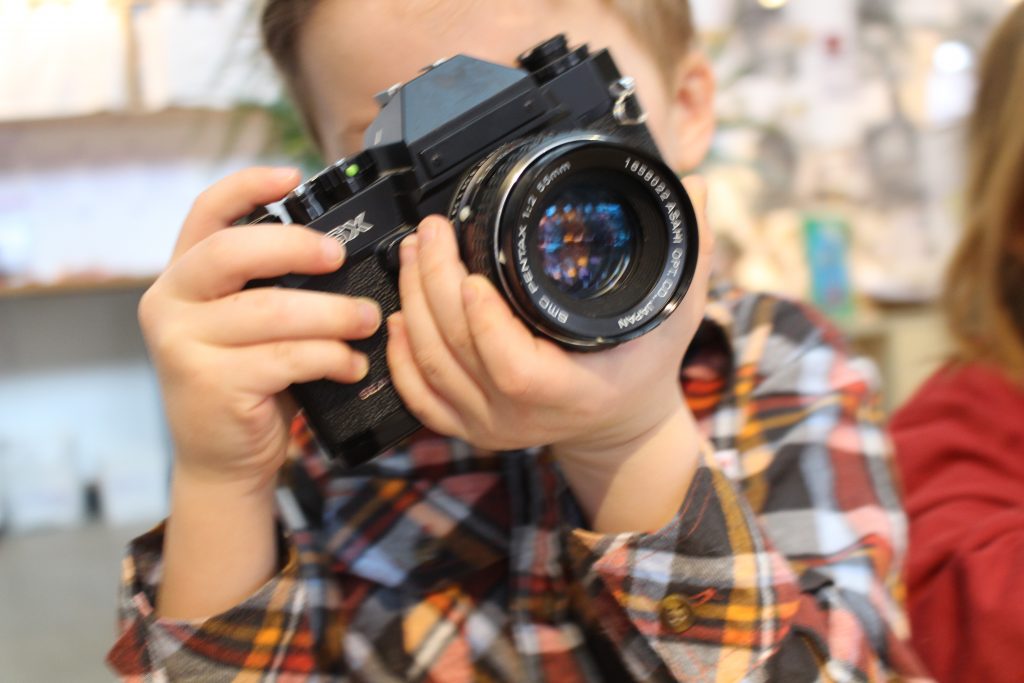
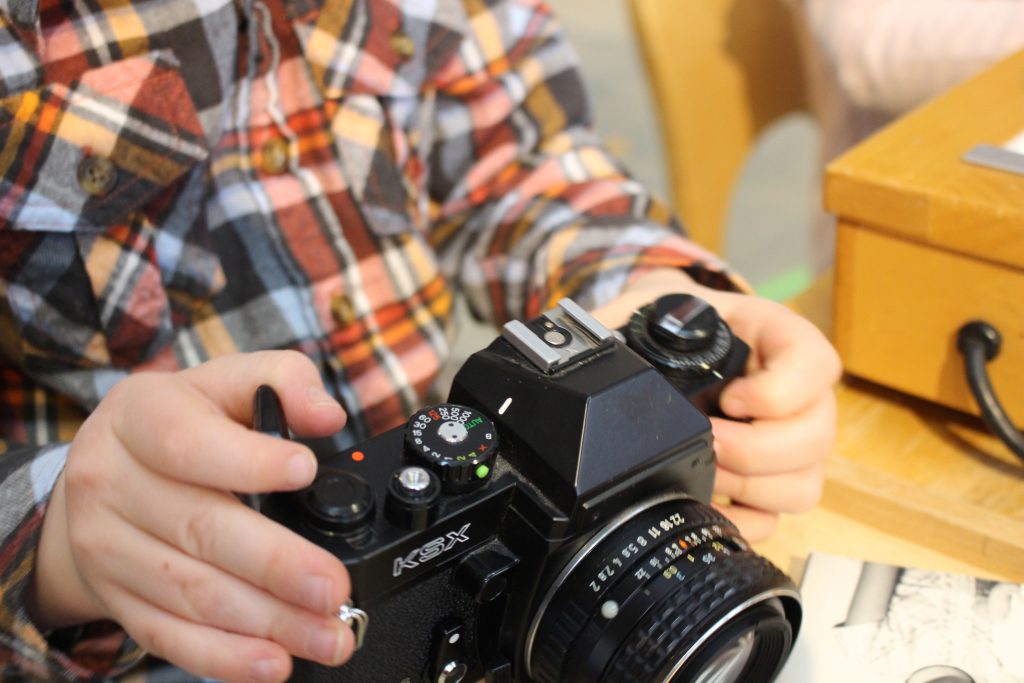
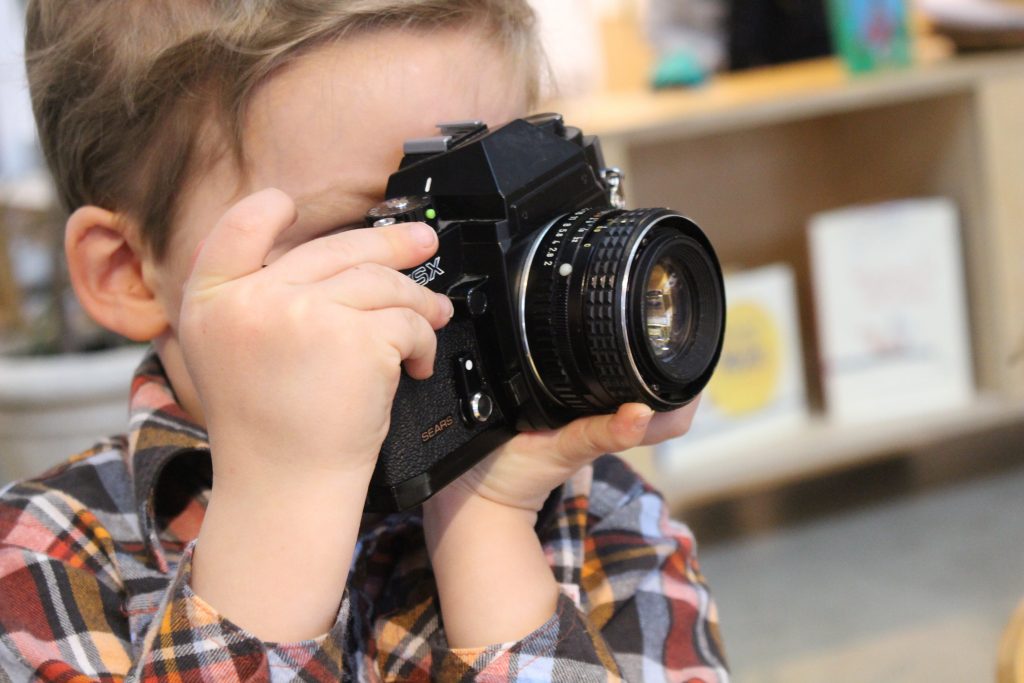
Why does someone take pictures?
“To remember them.” -Case
“It always does. Cause when I take pictures, I always remember.” -Travers
